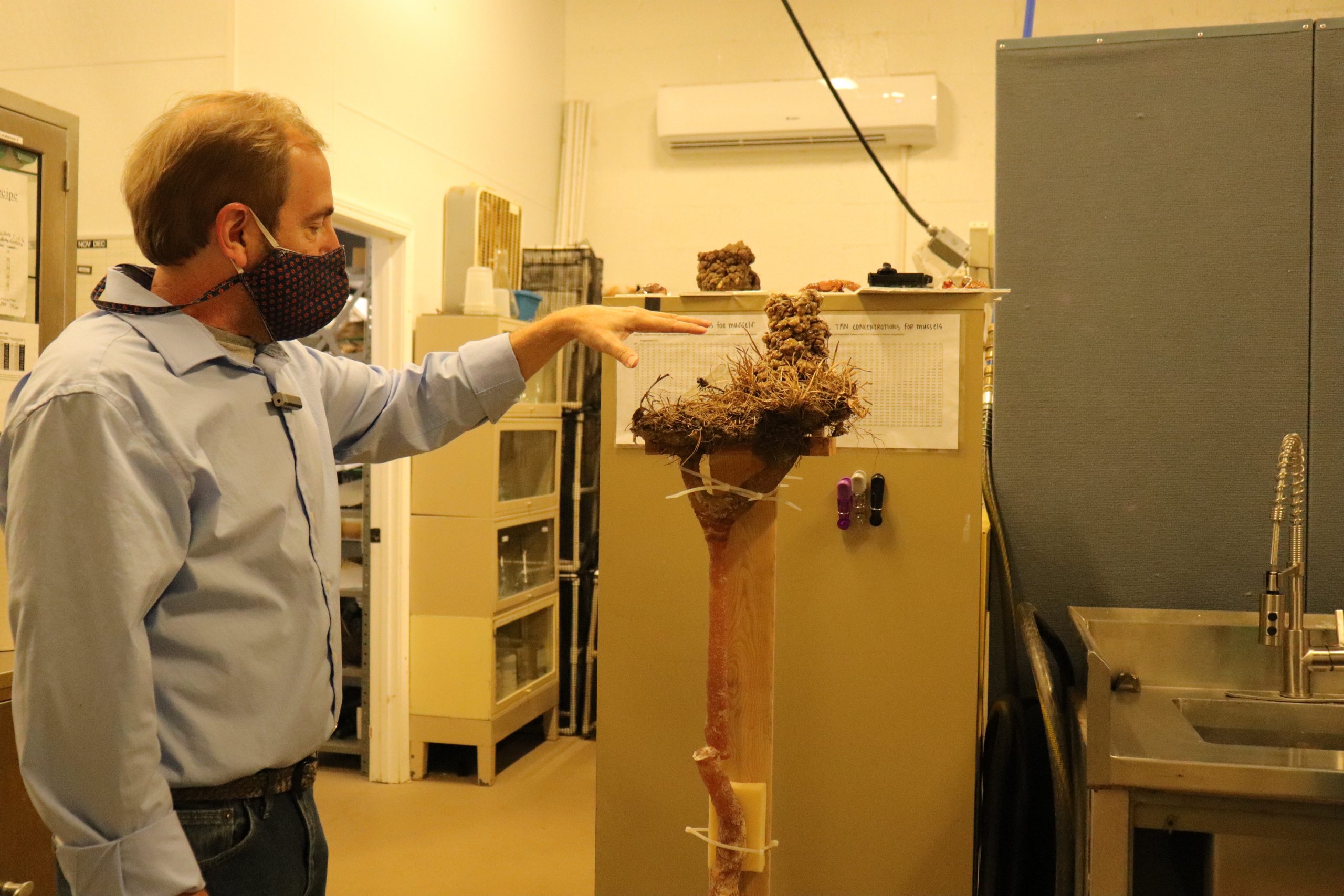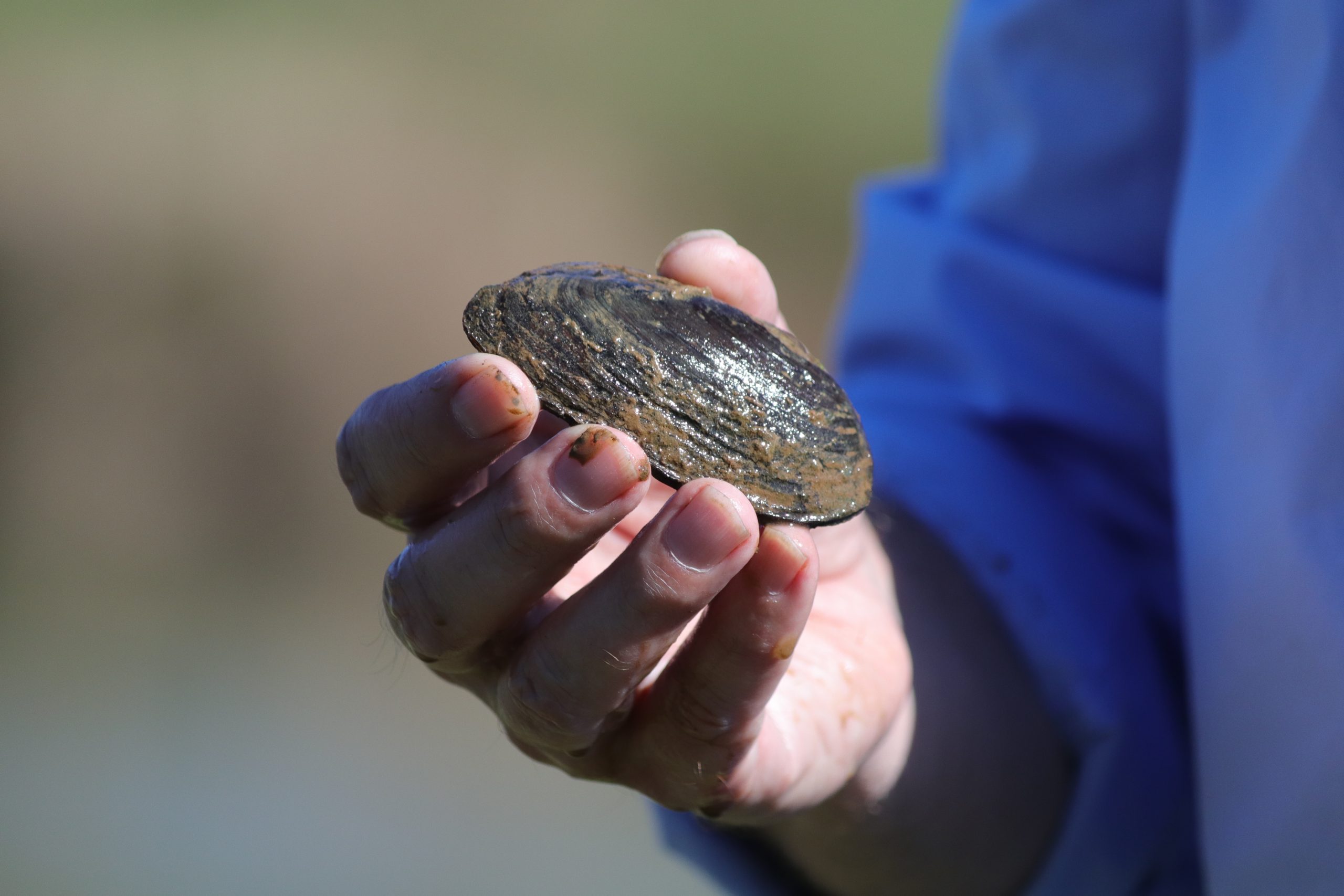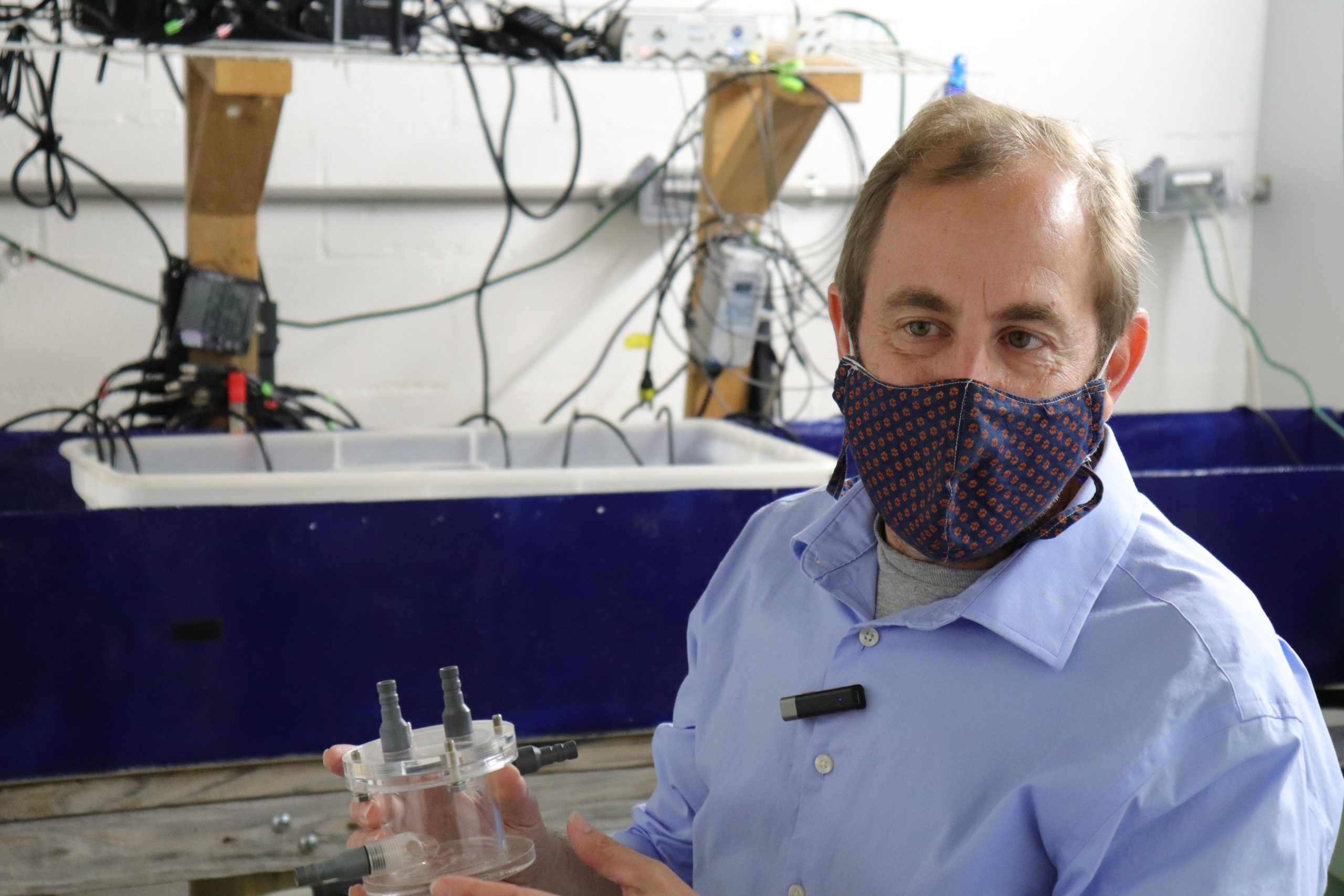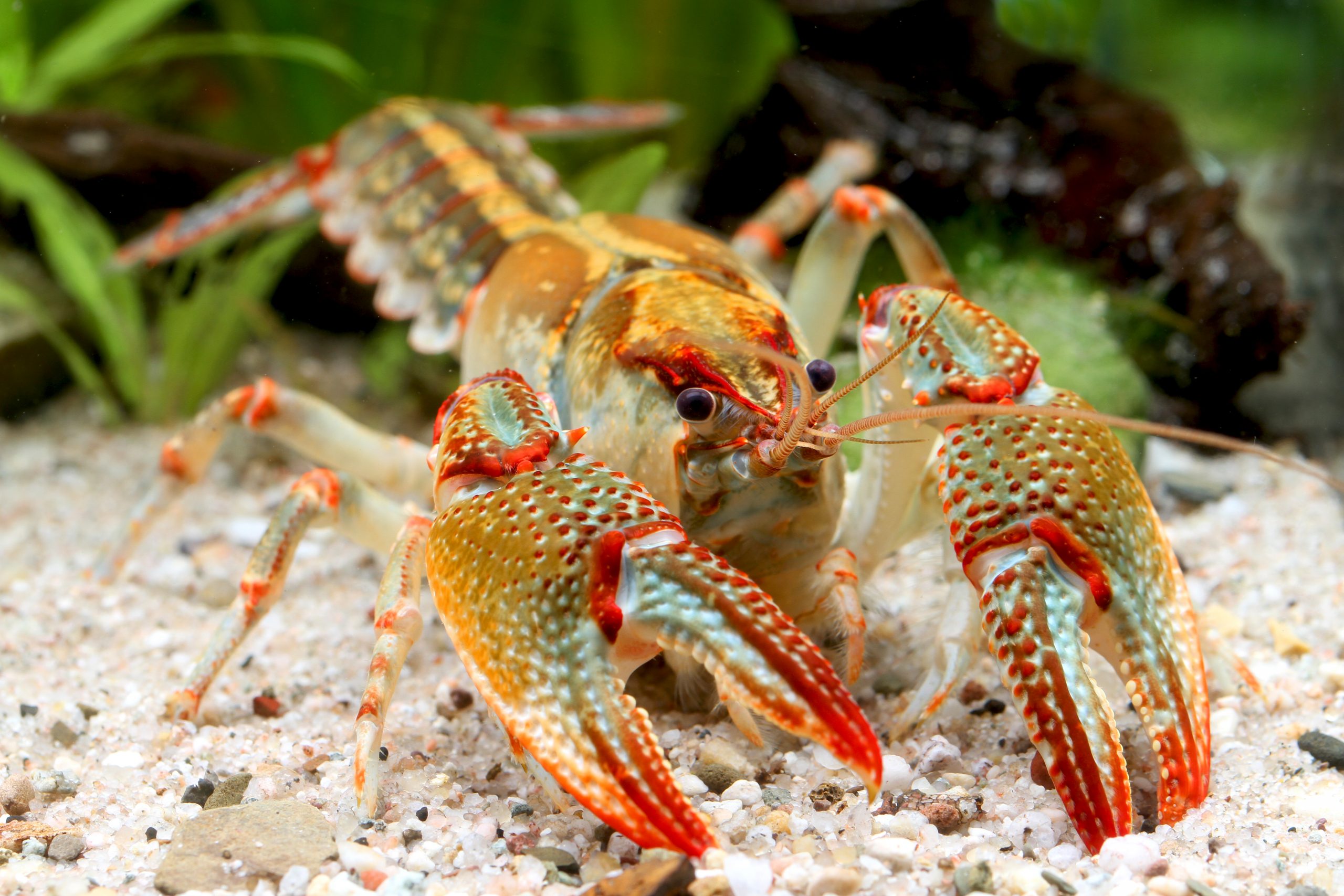AN AUBURN UNIVERSITY RESEARCH SPOTLIGHT ON ENVIRONMENTAL STRESSORS IN SOUTHEASTERN MOLLUSCS AND CRUSTACEANS.
By: Bethanie Hartzog

Dr. Stoeckel alongside a crayfish burrow resin mold in his lab at the E. W. Shell Fisheries Center in Auburn, AL.
When using Alabama’s rivers and streams for canoeing and other water activities, we may not always recognize the aquatic biodiversity that these waters hold. Alabama has the highest biodiversity of freshwater species of molluscs and crustaceans (including crayfish) in the United States. However, more than 50 percent of these molluscs and crustaceans are potentially under threat.
Dr. Jim Stoeckel, an Associate Professor in Auburn University’s School of Fisheries, Aquaculture, and Aquatic Sciences, through his research, is attempting to identify which types of environmental stressors affect Southeastern mollusks and crustaceans’ populations and how those stressors impact population viability.

Stoeckel holds a freshwater mussel kept in outdoor ponds at the E. W. Shell Fisheries Center. Photo Credit: Sydney Smith
Stoeckel’s primary focus is the conservation of Alabama-native freshwater species while also controlling invasive freshwater species that could potentially threaten native molluscs and crustaceans. Both molluscs and crayfish play important, yet highly different, roles in aquatic ecosystems; one is a filter feeder and the other is an omnivore. Despite this key difference, both animals are sensitive to changes and stressors in their environment. These stressors can take many forms. Stoeckel’s research has found three primary threats to freshwater populations in Alabama.
To begin with, altered flow regimes due to climate change, dams, and poor land use practices can play a role in wiping out these populations. “Just like your house can be destroyed by a hurricane or tornado, it is the same thing for these animals living in a stream. If we have big floods (that scour the stream bottoms), frequent droughts (that dry the streams), or a lot of erosion (that dumps excessive sediments into the streams), that can destroy their homes,” Stoeckel said.

Stoeckel holding a respiration chamber used for thermal stress experiments in his lab with molluscs and crayfish. Photo Credit: Sydney Smith
His research has also identified that thermal conditions of the environment have a large impact on the molluscs’ and crustaceans’ survivability. For instance, different molluscs species have different maximum temperatures that they can tolerate before their bodies begin to shut down. Identifying the different thermal tolerances for various species will help researchers and ecologists save species during high heat times. This is especially important as temperatures rise near riverbanks due to climate change and removal of riparian buffers (i.e. vegetation) near the water’s edge.

A wall of crayfish enclosures in the Stoeckel Lab. Crayfish that are captured for temporary use in the lab are allowed a time period to acclimate to indoor conditions prior to participating in research trials. Photo Credit: Rachel McGuire
However, some species have developed a mechanism of their own to protect themselves against different environmental threats. For instance, there is a group of crayfish, known as burrowing crayfish, that build their own homes to control various environmental factors. “They even build ventilation structures to control airflow, humidity, and temperature within their burrows,” Stoeckel said.

A crayfish burrow entrance with a short chimney on the AU North College Fisheries Unit. Not all burrow entrances have chimneys. Photo Credit: Sydney Smith
The Jewel Mudbug is one of these burrowing crayfish species. Despite being a common crayfish in parts of Alabama, the Jewel Mudbug was not officially identified until 2019. They maintain these ecological factors by creating a chimney in the burrow up to the surface as a ventilation system. Still, the burrows also extend down into the groundwater for the crayfish to stay wet. Striking this balance of adequate ventilation and constant access to groundwater is key to the Jewel Mudbug’s survival.

The Jewel Mudbug (Lacunicambarus dalyae) – Photo Credit: Chris Lukhaup
Stoeckel and his lab hope their research will help protect and preserve molluscs and crayfish species in Alabama. By figuring out what the animals need to survive, future generations will also be able to enjoy Alabama’s unique and stunning aquatic biodiversity.
